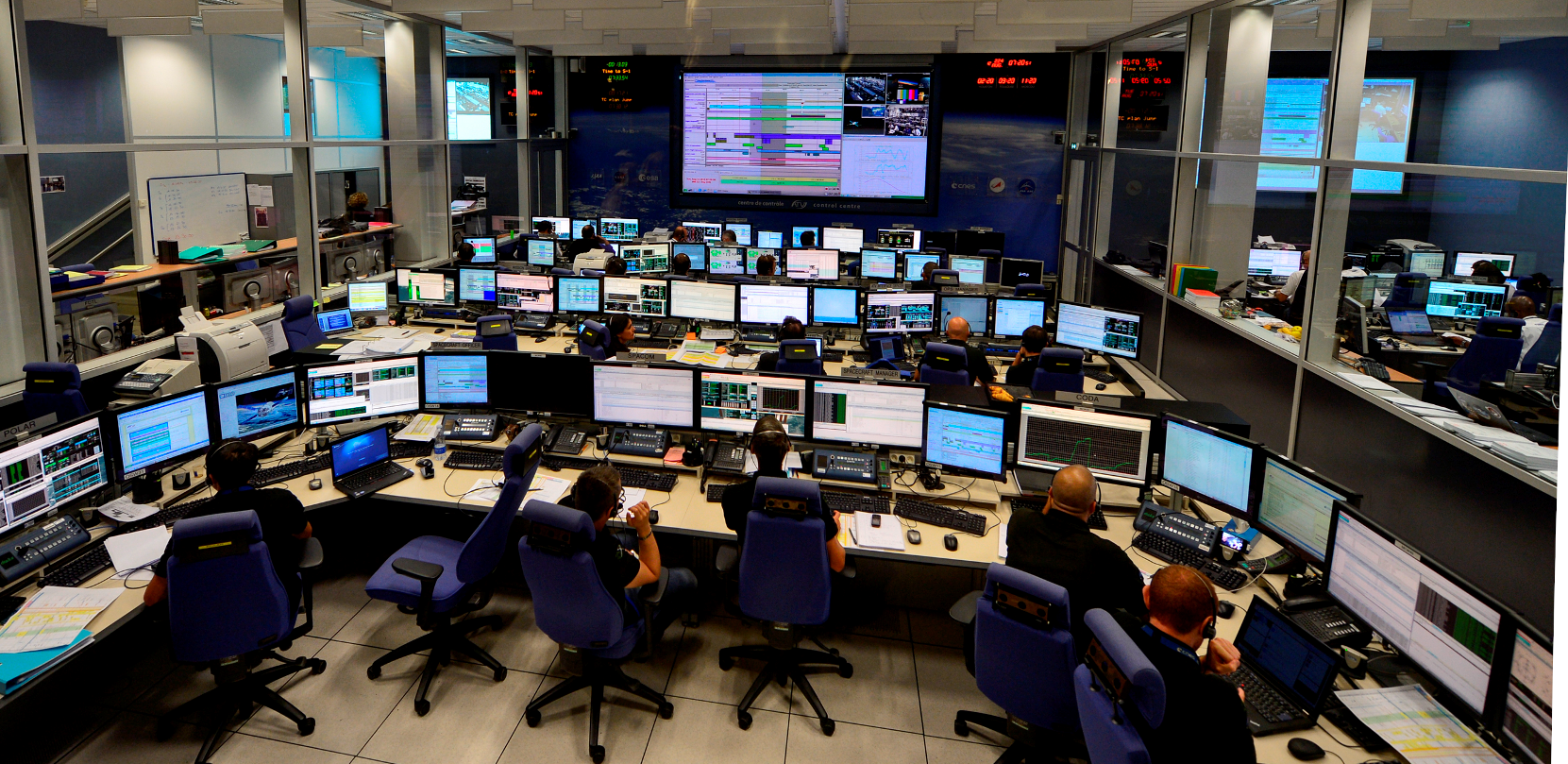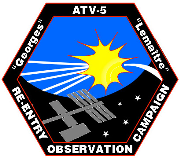Diary from a Space Project: ATV-5 10 Feb 2015
This report provided this afternoon by ESA’s Charlotte Beskow, at ATV-CC, reporting on the ESA and CNES team activities and giving details on the decision to perform a standard reentry on 15 February.
The mission is drawing to a close… but it’s still not over !!! Working with ATV is a bit like being on a roller coaster…

The ATV control centre in Toulouse, France, commands the craft throughout their missions. Credit: CNES/M. Pedoussaut
Friday, 6 February
As mentioned last week, we simulated ATV undocking with (only) three out of four power chains functional. The simulation went well and the teams are now using the data from that exercise to prepare for Saturday’s (real) undocking.
In parallel, the expert team was working hard to try and determine (1) what had happened to power chain 4, and (2) to see if it could be recovered.
A strategy for investigation on ATV itself was elaborated in record time and by Friday evening everything was in place. The ISS international partners, NASA and RSCE (Energia), were informed and ready to support us.
Saturday 7 February
Saturday morning the teams at ATV-CC were in place. The instructions to be carried out were in the system and we spent one hour double- and triple-checking everything to ensure that there would be no mistakes. It is always risky to work in a hurry, your eyes tend to see what the brain wants to see! With everyone in place, the activity started. We had been allocated as much communication as we required thereby ensuring that we could see the effect of each command either in the actual telemetry (status information coming from ATV) or via the command execution acknowledgement.
It is always risky to work in a hurry, your eyes tend to see what the brain wants to see!
Power for ATV is supplied by one of three means: the solar arrays when Sun is shining on them (16 such periods per day), the battery during orbital night (also 16 times per day and provided it has been charged during the daylight period), and the ISS when we are attached.
Several hours later, the experts concluded that the battery on chain 4 had been irretrievably lost. The power distribution chain itself was working, as were the equipment items connected to it (the Command and Data Unit and the Thermal Control Unit). This meant that power generated by the Solar Arrays during daytime could be correctly transmitted to the downstream equipment, but we would need the Station to supply power for the orbital nights.
Our Space Station partners announced on the voice loop that they could help with power for the next few days, so, as of the end of Saturday, ATV was back up and in a ‘quasi-nominal’ configuration.
I say ‘quasi nominal’ because not all the heaters had been put into the configuration (to reduce the power drawn from the Station). This removed the pressure on the teams for the coming days. However, it also meant that before disconnecting ATV from the International Space Station, ATV would have to change from four power chains to three.
This, as we will see, would have an effect on the upcoming operations.
Sunday 8 February
We check in on ATV. George is keeping well, he is in the exact same state that we left him in on Saturday. Good for him (and us!). The Station keeps supplying power.
Monday 9 February
 Management discussions get under way. At stake is the planned shallow reentry.
Management discussions get under way. At stake is the planned shallow reentry.
Normally, ATV separates from the Station and then reenters the following day. Reentry takes place in an isolated area of the south Pacific Ocean and all traffic maritime/air is warned beforehand.
Reentry is by definition a risky operation; basically you bring down your vehicle at a high rate of speed so that as much as possible is destroyed on the way down and whatever is left over lands within precise, safe, boundaries. It is ESA’s responsibility to ensure that ATV reentry is safe.
NASA had requested ATV to perform a different, more shallow, reentry to gather data that would be valuable for modelling future reentries. This would take place in such a manner that allowed observing the reentry over the designated area from a nearby aircraft. [ESA’s Space Debris Office also saw the significant value in such data and joined the campaign as co-sponsor – Ed.]
The idea was brought forward many months ago and teams have been working very hard on this for a long, long time. It required a lot of coordination between ESA, NASA and the observing sites (including New Zealand and a special aircraft to visually observe the reentry); then the ATV flight dynamics teams had to perform the orbit calculations and so on and so forth. Nothing is done in a ‘jiffy’ – quite a lot of time, effort, energy and resources had been poured into this task.
With the undocking date driven by Station traffic (other vehicles are approaching and need the docking port) and the shallow reentry date driven by the observation needs, this left ATV orbiting around the Earth for two complete weeks after planed undocking on 14 Feb. The operations also involved a series of manoeuvres (i.e. thruster burns) to get to a safe parking orbit, to stay there for the two weeks, and then to set everything up for reentry.
Managers now had to assess the fact that one level of redundancy had been lost. They had to weigh the pros and cons of a shallow reentry carefully – and a decision had to be reached no later than 12 February.
While all these high-level assessments were continuing, the Space Station crew have been busy preparing for the Dragon (SpX-5) departure (10 February) and ATV’s departure. They put more cargo into ATV and remove one of the functioning light units; it will be recycled as a spare on the Space Station.
In Les Mureaux, the ATV industrial support teams were working to prepare the undocking, free-flight and reentry using just the three functional power chains, while here in Toulouse CNES were busy preparing the necessary procedures plus conducting the day-to-day vehicle operations.
Tuesday 10 February
George is nice and stable… nothing has changed since Saturday afternoon. No new alarms or surprises. Good for him!
At 15: 22 we get the message: Management has decided to go for a nominal reentry… this coming Sunday….!
I transmit the message to the rest of the expert teams, just in time for them to cancel hotel reservations and reorganise flight tickets. They will all be arriving two days from now and there is still a lot to do, even if it suddenly became a lot less.
I look at my multicoloured Engineering Support Team (EST) manning spreadsheet that has been carefully worked out to respect the legal working hours awhile still covering the many tasks that had to be done between 9 and 28 February… and my first thought is: ‘I can throw this in the bin!’
My second thought is that it is not quite true; we still have to undock and reenter. Half of it can go into the bin and, come Monday, this will all be over!
My third thought is for all the people who put in the long hours to make the shallow reentry a viable possibility, and in particular the NASA teams who were the driving force behind it. Hard work is not always rewarded; we can only do our best.
Oh well; time to go on console, SpX 5 will be departing ISS shortly and the ATV Solar Arrays will be feathered for the occasion.
– Charlotte

 Automated Transfer Vehicle page
Automated Transfer Vehicle page ATV blog archive
ATV blog archive
Discussion: no comments